Either full-time or as a side gig, professional photography can be both incredibly rewarding and lucrative.
From in-person events to seasonal snapshots, photographers are constantly in-demand in just about any local community. Meanwhile, the web and social media make it easier than ever to gain exposure (ha!) for your personal brand.
However, making it as a photographer doesn’t happen by accident. Doing so requires you to look at yourself as a business owner first and a creative second.
In this guide, we’ll break down everything you need to know about starting a photography business.
Why start a photography business, anyway?
- What are the challenges of starting a photography business right now?
How to get your photography business up and running
- Choose a niche to help your business stand out from the crowd
- Invest in the proper photography equipment
- Lock down your photography business’ online presence
- Get yourself set up to accept payments and invoices
- Figure out your pricing and packages
4 key steps to growing a new photography business
- Network with friends, family, and other business owners in your area
- Work on building your social following
- Fine-tune your website to attract clients
- Consider online marketplaces for selling your photos and services
How to reinvest in your photography business
Why start a photography business, anyway?
Hey, good question.
If you’re already a skilled photographer with halfway decent equipment, turning your passion project into a business is a no-brainer. Perhaps the biggest upside of a photography career is that you don’t need a particular degree or training background to get your feet wet.
Speaking of which, there’s nothing that says you have to dive head-first into starting a photography business by going full-time.
For example, wedding photographs can easily earn hundreds of dollars per hour for their services. That translates into a ton of earning potential even for someone doing a dozen or so events per year.
Beyond that, a photography business is creatively fulfilling. In a day and age where so many of us are just grinding out of day jobs, photographers have a unique opportunity to get involved in their local communities, meet new people, and make art. Sounds like a pretty sweet deal if you ask us.
What are the challenges of starting a photography business right now?
Let’s start with the obvious: competition in the photography space is fierce.
The barrier to entry for starting a photography business is arguably lower than ever. Although this spells good news for up-and-coming photographers, it also means that even someone taking snapshots on an iPhone can brand themselves as a professional online.
The challenge here is two-fold. Not only does crowded competition create a mentality where customers think they can get a photographer on the cheap, but it also means you have to work harder to highlight your expertise versus amateurs.
Starting a photography business can be pricey. Food for thought: a single DSLR camera can easily cost $1,000+ (and that’s not even on the high end) before you consider additional expenses such as lenses or editing software.
Getting into professional photography means minding your budget when it comes to not only taking photos, but investing in your business’s infrastructure (think: marketing materials, web presence).
How to get your photography business up and running
Let’s say you’re ready to get your business off the ground.
Nice! But before worrying about getting your first clients, consider the following must-dos for starting a photography business.
🌟 Make your small business look bigger with RingCentral🌟
Choose a niche to help your business stand out from the crowd
Remember what we said earlier about fierce competition? Arguably the best way to differentiate yourself from other photographers is specializing in a particular photography niche.
This not only allows you to focus on the types of photography you actually excel at but also makes it easier to market yourself versus other jack-of-all-trades photographers. Below are some examples of photography niches:
- Portrait photography
- Wedding photography
- Vintage photography
- Landscape photography
- Aerial/drone photography
There is no “right” niche to choose, by the way. Having a specialization ultimately influences how you market yourself and which types of photographs you show off in your portfolio.
For example, someone specializing in family photography might offer packages for newborn photos, at-home snapshots, and traditional portraits (see below).

Another added bonus of specialization is that it makes you and your website easier to find via Google search (more on that later). If you’re able to rank for keyword terms such as “[your city] wedding photographer,” you set yourself up for a ton of leads from search engines alone.
Invest in the proper photography equipment
This is the big one. As noted earlier, photography equipment can be quite pricey and ultimately separates professionals from amateurs.
There’s plenty of debate about what’s considered the “bare minimum” or “entry-level” for those starting a photography business. Below is a brief breakdown of what a professional should have handy:
- Camera(s)
- Lenses
- Tripod(s)
- Flashes
- Lighting fixtures
- Backdrops
- Photo editing software (think: Photoshop, Lightroom)
- Memory cards and hard drives
- A reliable editing computer
Don’t panic if there’s something on the list above that you don’t have or can’t immediately afford. As highlighted by the video below, you can take a sort of minimalist approach to your professional gear for under $1,000:
Keep in mind that equipment alone doesn’t define your skill as a photographer, nor does it totally limit your earning potential as a business. There are plenty of crummy photographers out there with $10,000+ in equipment.
Lock down your photography business’s online presence
Although much of starting a photography business means meeting and working with clients in-person, getting those clients means having a solid online presence.
For starters, you’re going to need a website that’s all your own. There are tons of web hosts and domain providers out there, many of which have templates tailor-made for photographers (see the example from Wix below).
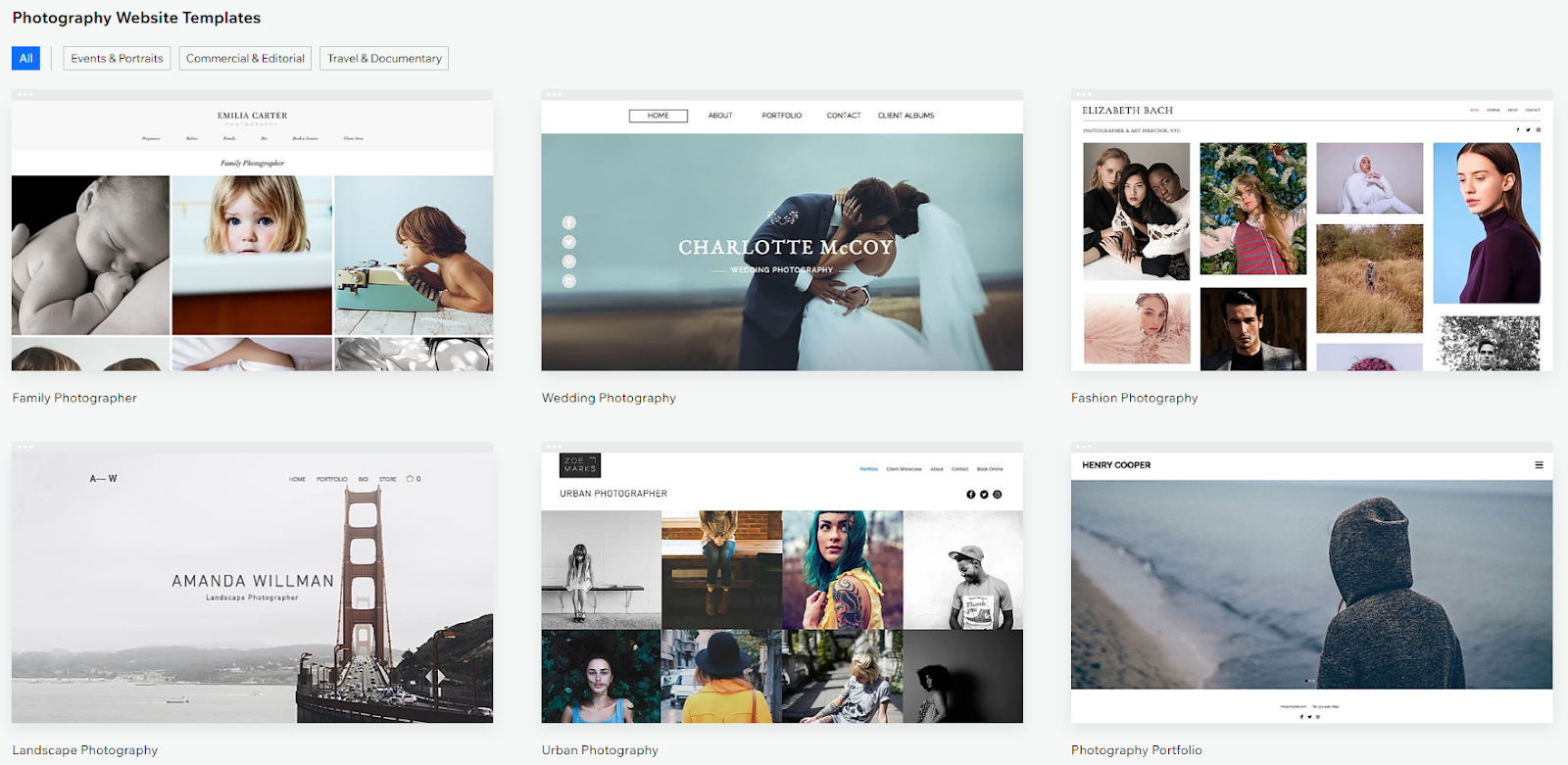
Whether or not you choose such a template or host your website via WordPress is totally up to you. Most of the major hosting providers have one-click WordPress installs and will walk you step-by-step through the process of getting online at no extra charge. Just make sure you have enough storage space to support your portfolio of massive, high-res photos.
Social media is a huge part of any photographer’s online presence. For example, platforms like Instagram are perfect for highlighting your work, tagging clients, and making note of any events you’ll be attending. It’s likewise somewhere to define your personal brand and encourage prospects to get in touch with you.

Beyond Instagram, Facebook is somewhere you should be for the sake of networking with local businesses. Pinterest is also a channel where you can highlight your work for additional exposure, although you probably won’t see much client activity there.
The function of your online presence is simple: show off your work, define your brand, and attract clients.
Get yourself set up to accept payments and invoices
You really can’t consider yourself a photography business until you get paid, right?
Although some amateur photographers might be okay with accepting the occasional PayPal or Venmo payment, you should ideally have a service that both generates and organizes invoices for you automatically.
For example, platforms like Square (see below) make it a cinch to take someone’s credit card info and pay for photography sessions in-person. You can likewise use an online payment processor like Stripe to accept ‘em online.
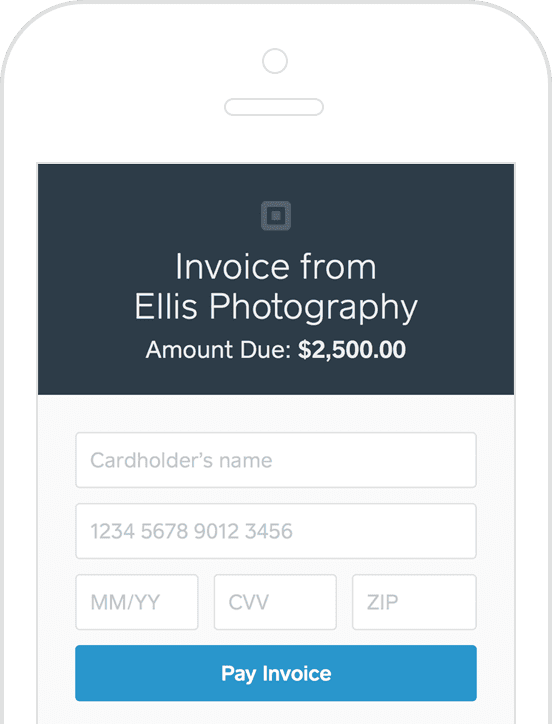
Just make sure you aren’t endlessly jumping between payment tools and email invoices: otherwise keeping track of your business’s finances will be a massive headache. This is especially true during tax season.
There are relatively inexpensive tools such as QuickBooks and FreshBooks which are all the rage for small businesses. Although such tools might be a bit much for your needs, the initial investment is worth it just to keep your invoices in line and track expenses for your taxes.
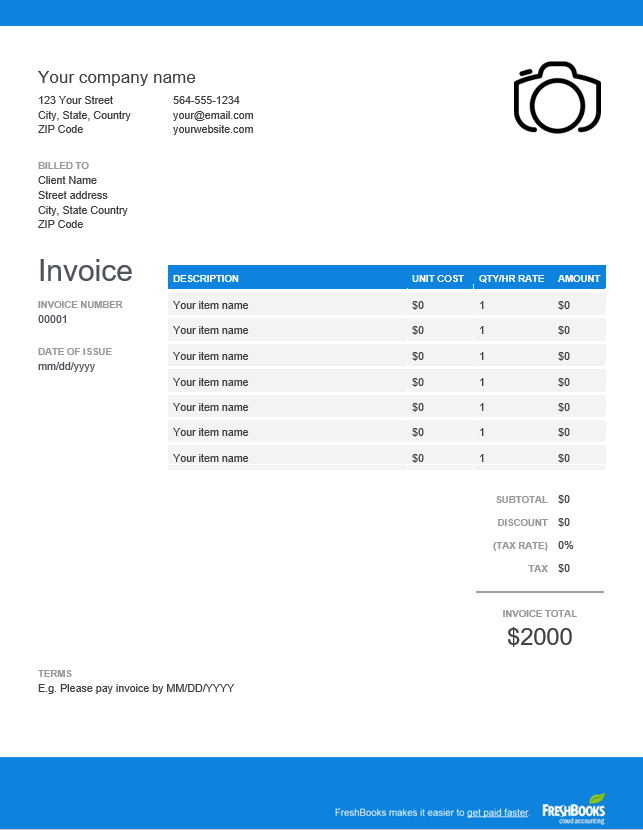
Another smart investment for your business is a booking solution that allows customers to prepay for packages and sessions ahead of time. Tools like BookedIn allow you to integrate an on-site calendar to do exactly that.
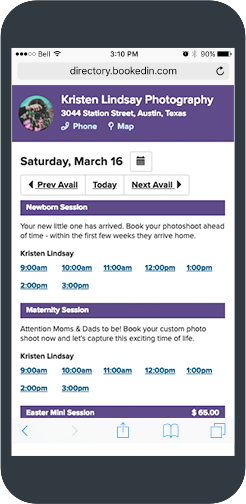
What matters most is that you aren’t just randomly accepting payments and appointments from clients in an endless email chain.
As a side note, you don’t necessarily need to form an LLC if you’re looking to accept payments as a photographer. Starting as a sole proprietorship is totally fair game, especially if you’re trying to keep costs down as you’re starting your photography business.
Figure out your pricing and packages
Simply put, what are you going to offer your clients?
This might seem fairly straightforward, but there are tons of variables that ultimately influence your pricing and what you’re willing to do.
For example, do you have your own studio? Are you accounting for the price of gas to meet clients on location? How long are your sessions going to last and how many photos do you offer?
And of course, there’s the issue of how much to charge. Variables such as your specialization and experience level definitely factor in, but also consider that you should feel comfortable charging what you’re worth.
Below is an example of packages and pricing for a wedding photographer:
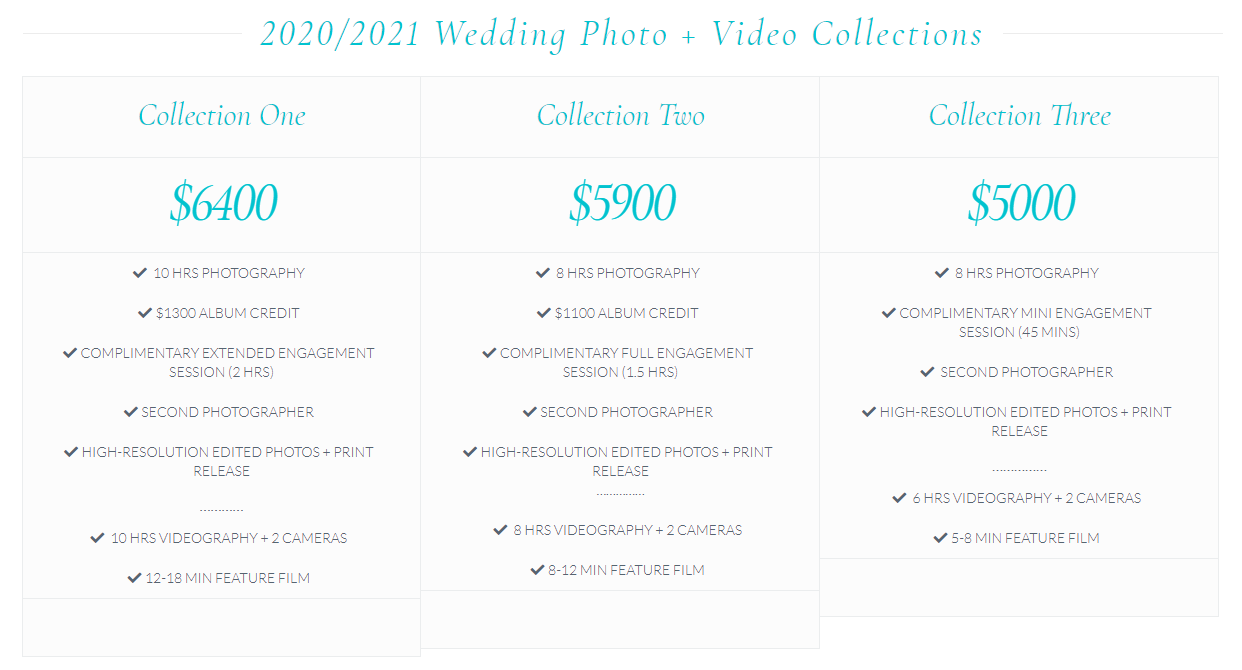
Our recommendation is to explore photographers in your area and specialization to see what they offer. The point isn’t to parrot their packages, but rather get a sense for what’s considered “standard.”
4 key steps to growing a new photography business
Once you’ve taken care of the steps above, it’s time to start growing your client base and building out your online presence to get more attention to your portfolio. Below are some key steps to establishing your brand and reputation.
1. Network with friends, family, and other business owners in your area
Reality check: clients aren’t going to flock to you when you’re in the early stages of starting a photography business.
In short, you’re going to need to network. You may be surprised at how many people are in need of photography services, but you’ll never know until you ask.
Beyond friends and family in your network, consider business owners that you have relationships with. For example, many bars, coffee shops, or local festivals feature pop-up photo booths for special events where you could potentially be featured.
Those same businesses might be interested in new photos for their own websites, too.
Either way, you have to put yourself out there. Even something as simple as taking pictures at events within your local community and publishing them online is a starting point to get more eyes on your work.
2. Work on building your social following
Creative photographers are among the most-followed and engaged-with accounts on social media, particularly Instagram. Taking stunning local photos is a great way to garner buzz as a professional photographer. For starters, you can:
- Take photos at local events and tag businesses featured in your snapshots
- Show off photos of your satisfied clients (even if they’re your friends or family)
- Let people know which events you’ll be attending and promote your services
New photographers should hit social media hard. In addition to growing your following locally, consider how you can expand the reach of your work with the help of photography-centric hashtags (think: #urbanphotography).

Creativity is a cornerstone of any photography business. Even if you don’t actively have leads, you should continue to produce work and take pictures. For example, in the wake of COVID-19 as photographers are putting together “socially distanced” portraits and photoshoots to keep themselves busy.

3. Fine-tune your website to attract clients
Your website is valuable real estate for attracting clients, but not if it’s just sitting there gathering cobwebs.
Thankfully, there are some quick fixes and adjustments you can make to gather more leads ASAP.
For example, it should be as simple as possible for clients to be able to get in touch with you. Instead of relaying queries to an email address, consider putting together quick contact forms for leads to fill out that don’t require them to leave your website. Here’s are some solid example of pre-built contact forms via Jotform:
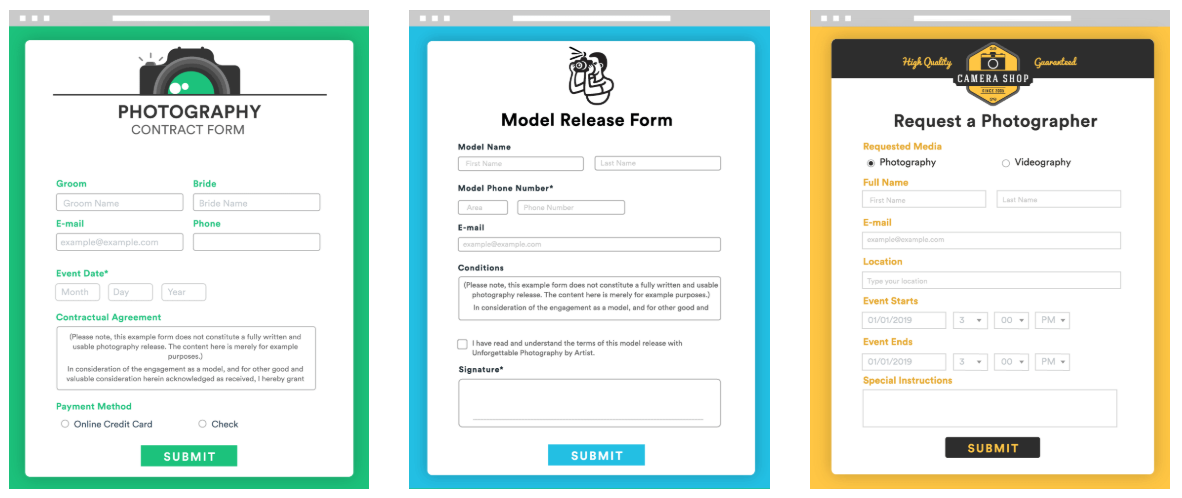
Additionally, a bit of light SEO and keyword-targeting can go a long way. Crafting blog posts or optimizing your site for relevant keywords (think: “[your city] photographer”) is a subtle way to attract traffic from search engines.
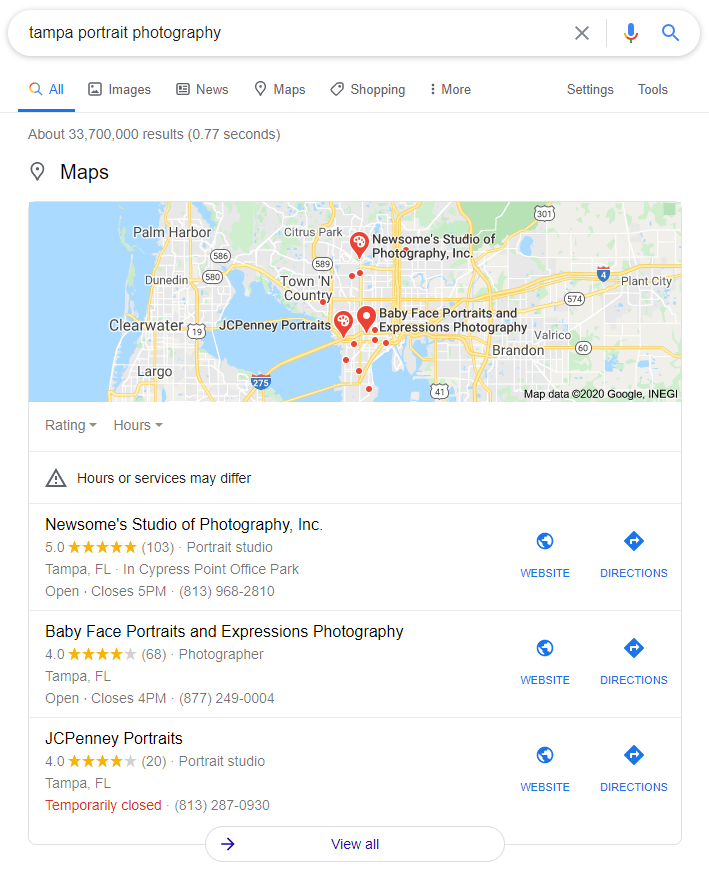
Another key way to improve your website is by making your portfolio pop. For example, there are tons of WordPress plug-ins out there to help you put together a scroll-worthy portfolio that looks beautiful on mobile devices and desktop computers alike. To give your potential clients a taste of your latest work, you can also include a slideshow of your up-to-date Instagram feed.

The takeaway here is that your website shouldn’t be totally “set and forget.” If you’re disappointed with your amount of leads or traffic, consider these small tweaks as a starting point toward making your website look more professional.
4. Consider online marketplaces for selling your photos and services
If you’re having trouble attracting local clients, don’t panic. For the sake of getting used to selling your services and gaining additional exposure, you should explore online marketplaces as a way to supplement traditional client work.
For example, sites like Fiverr allow you to offer services such as stock or product photography to business owners online. Although these gigs may not be the highest-paying or glamorous, they have a low barrier to entry and can snowball into consistent work if you get in with the right clients.
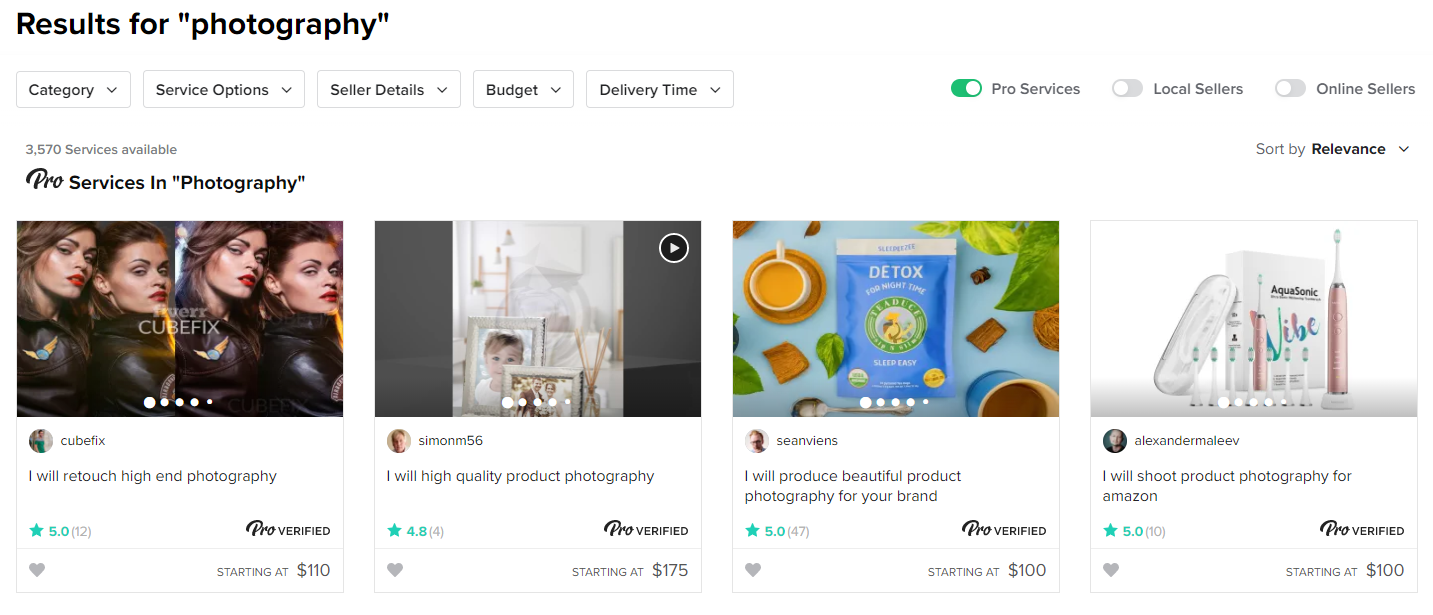
If you have a physical space or studio, you might want to look into sites like Peerspace. The platform allows you to set up sessions for photoshoots and likewise highlights locations you might want to utilize in the future.

Also, consider the seemingly endless slew of websites that allow you to submit and sell your work (sometimes in exchange for royalties). These sites include:
- Adobe Stock
- Etsy
- Shutterstock
- 500px
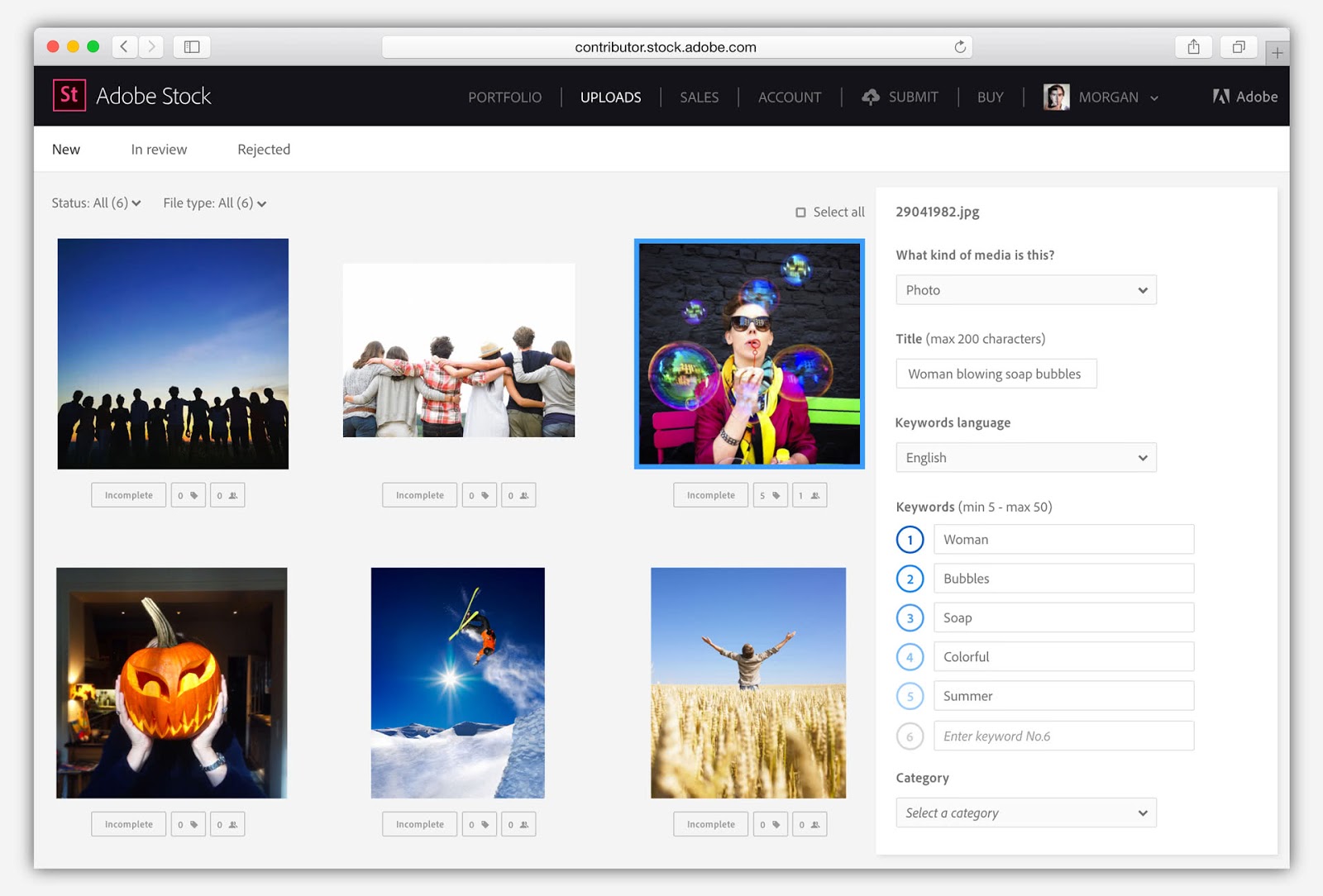
How to reinvest in your photography business
To wrap things up, let’s highlight some strategies to level up your business once you’ve established a base of clients and are keeping yourself busy.
Perhaps the most obvious way to continue to grow your business is by raising your rates on new clients. Assuming you’re reaching the point where your schedule is packed, doing so is a safe way to grow your earning potential without losing your current workload.
If you’re on the fence about your rates or aren’t sure if raising your rates makes sense, consider this recent breakdown of photography pricing for reference.
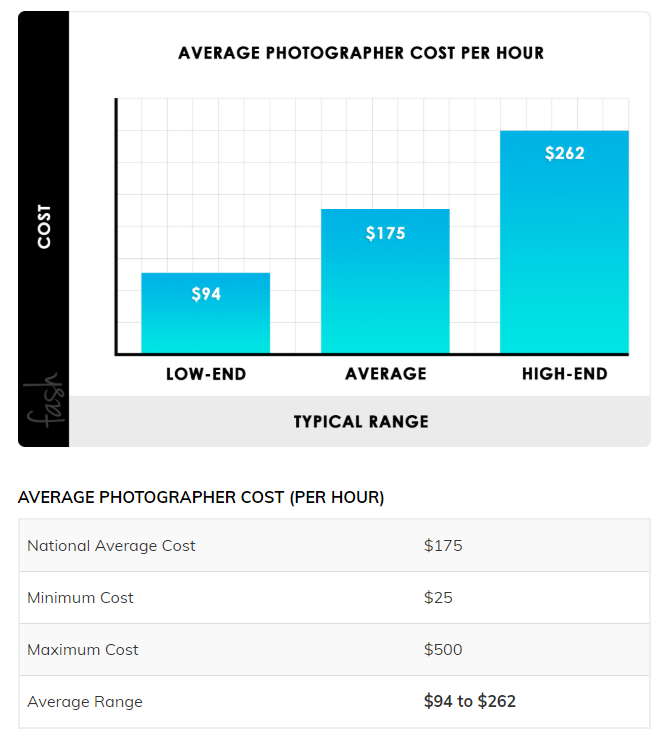
Also consider opportunities to bring on another photographer to help take on gigs that you can’t manage by yourself. If you have relationships with other photographers, this keeps you from having to turn down work while also helping out someone else in your network.
And finally, consider how upgrading your business’s tools can help you expand your operation. Beyond new photography equipment, there are tons of tools that can help streamline your business’s communication or ensure that you’re managing your projects more efficiently.
For example, RingCentral has helped photography studios keep better track of their tasks and eliminate errors as a project moves from Point A to Point B.
Is starting a photography business in the future for you?
A photography business is undoubtedly hard work, but it’s totally worth it for those with the initiative and talent to get started. Hopefully this guide served as such much-needed motivation to do so yourself, or at the very least understand the legwork involved.
Updated Apr 20, 2025












